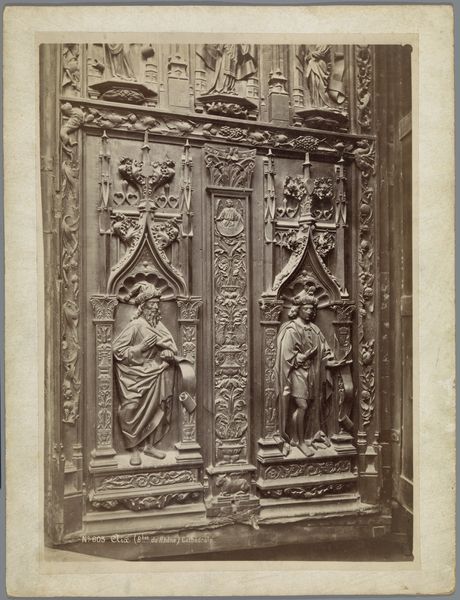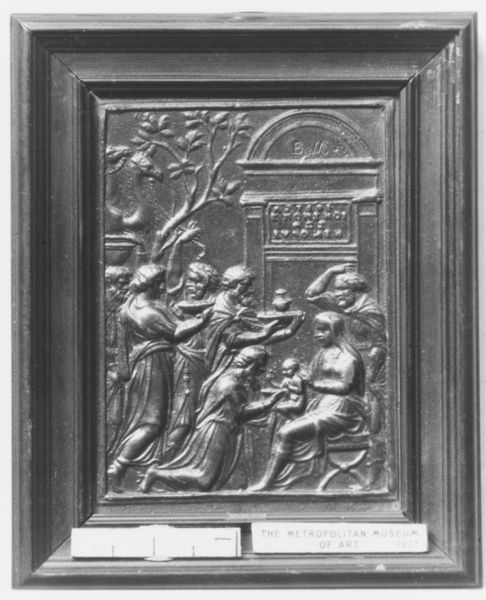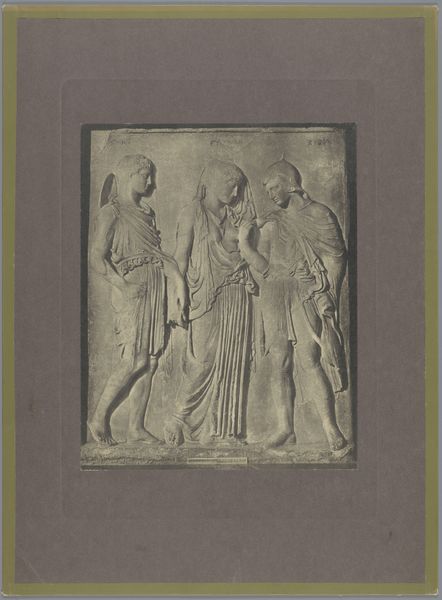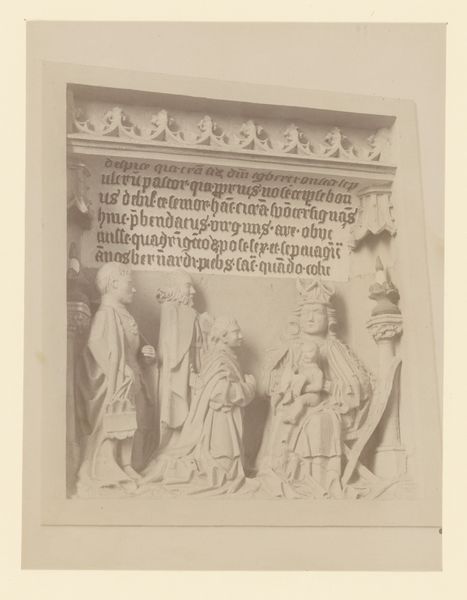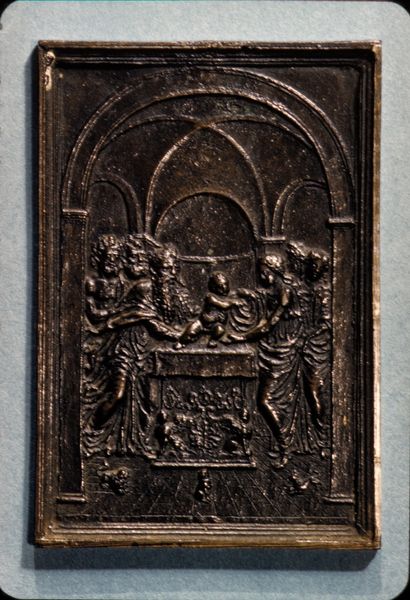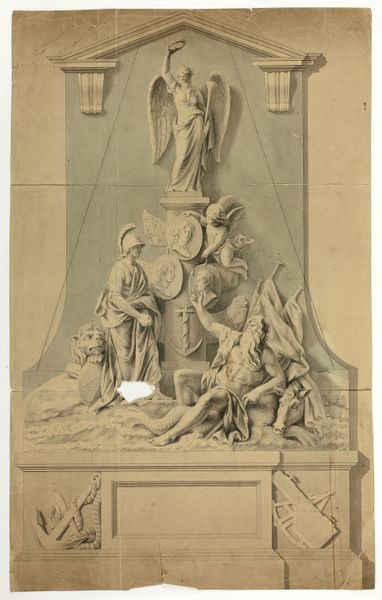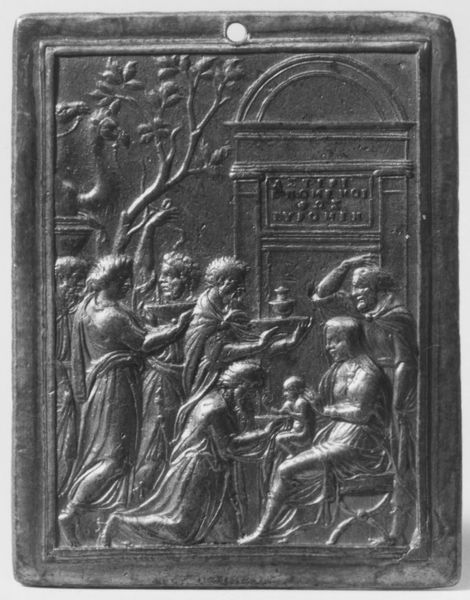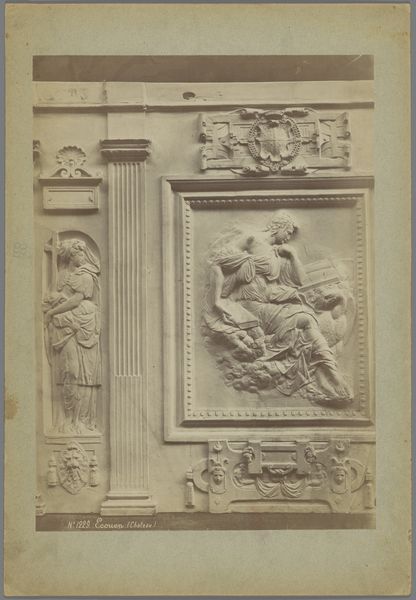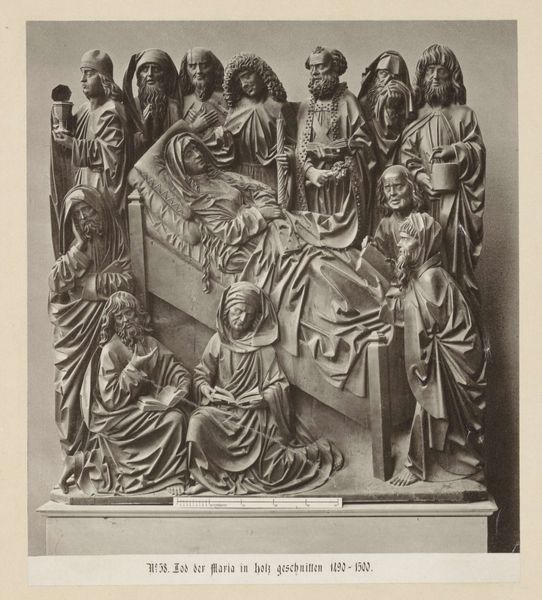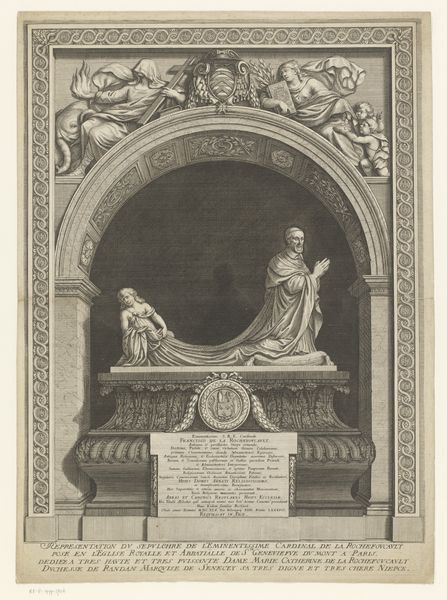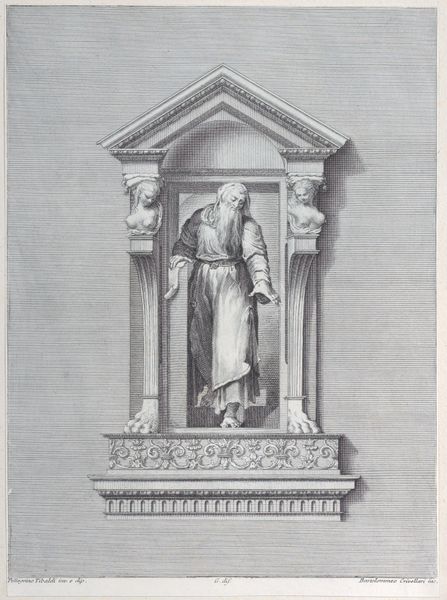
Reliëf van brons met een voorstelling van Christus en andere figuren, van Peter Vischer 1869 - 1887
0:00
0:00
relief, bronze, sculpture
#
medieval
#
narrative-art
#
relief
#
bronze
#
figuration
#
historic architecture
#
traditional architecture
#
sculpture
#
history-painting
Dimensions: height 252 mm, width 191 mm, height 537 mm, width 430 mm
Copyright: Rijks Museum: Open Domain
This bronze relief depicting Christ and other figures was likely produced in the early 16th century, perhaps in Germany. The image creates meaning through a series of visual codes. It portrays a biblical scene, set against an architectural backdrop reminiscent of classical antiquity, reflecting the Renaissance interest in harmonizing Christian narratives with classical forms. Given the presence of heraldic shields at the base, it probably served as a memorial plaque, commissioned by a wealthy family seeking to associate themselves with both religious piety and classical learning. As historians, we can look to sources like period account books, guild records, and family genealogies to learn more about who might have commissioned such a work. By delving into such archives, we can better understand the social forces and institutional networks that shaped artistic production in this period.
Comments
No comments
Be the first to comment and join the conversation on the ultimate creative platform.
